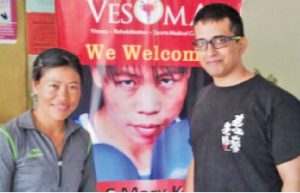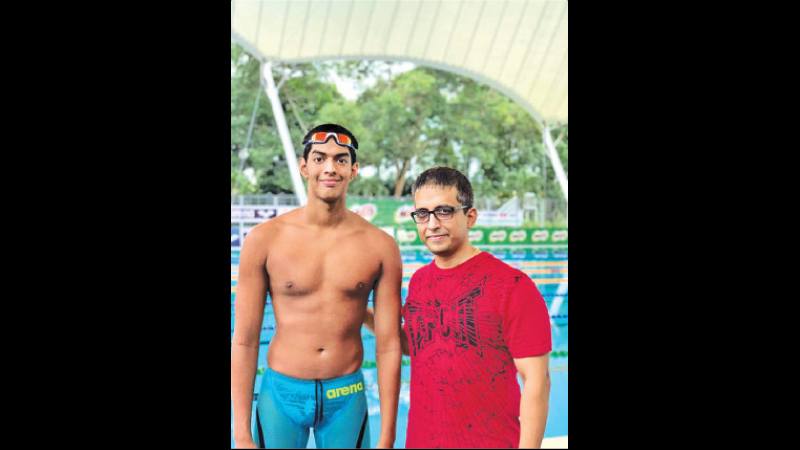Injuries in sports, particularly among professional athletes, are a multifaceted issue that involves physical, mental, and psychological aspects. Fast bowlers in the Sri Lanka cricket team frequently breaking down and missing crucial international tournaments is a common concern. Here are some insights into the various dimensions of this problem, based on general knowledge and insights from a renowned Indian sports science expert Deckline Leitao.
“Fast bowlers are prone to injuries due to the repetitive nature of their actions, which places significant stress on their bodies, particularly the back, knees, and shoulders. Over-training without adequate rest and recovery periods can exacerbate this,” says Leitao, a sports and exercise science specialist known for his transformative approach to athlete training and development, understanding the interplay between physical conditioning, mental resilience and psychological support crucial in managing and preventing injuries.
The coaching staff, including fitness trainers and physiotherapists, are responsible for ensuring that players follow appropriate training regimens and recovery protocols.

When Olympic boxing legend Mary Kom came for a training camp
“Managing the workload of players is crucial. When players participate in multiple formats (Test, ODI, T20) and various leagues, their bodies may not get sufficient time to recover, increasing the risk of injuries,” adds Leitao whose journey into the world of sports began with a state-level silver in Taekwondo in 1991, igniting his passion for physical fitness and performance enhancement. After earning a bachelor’s degree in sports science at the University of KwaZulu-Natal in Durban, South Africa, he furthered his education with a degree in sports science and culture at Roehampton University.
Implementing strict load management policies to ensure that players are not overburdened includes monitoring their playing time and ensuring adequate rest periods.
“Incorrect techniques or biomechanical inefficiencies can lead to injuries. Proper coaching and regular biomechanical assessments can help in identifying and correcting these issues,” he explains.
Leitao stresses the importance of recovery, including rest, physiotherapy and rehabilitation exercises; developing and adhering to injury prevention programs that include strength training, flexibility exercises and proper warm-up and cool-down routines and providing access to sports psychologists to help players manage the mental stress associated with professional sports.
His coaching philosophy is deeply influenced by the principles of Jeet Kune Do, the martial art created by Bruce Lee, which emphasises practicality, adaptability and a holistic understanding of the human body. His expertise in strength and conditioning, performance enhancement and corrective exercise is underpinned by a multitude of certifications and qualifications. Leitao’s comprehensive and intuitive understanding of biomechanics, physiology and exercise science allows him to tailor training programs that optimise athlete performance while minimising injury risks.
“Lack of proper support systems, including physiotherapists, sports psychologists and nutritionists, can contribute to the higher incidence of injuries,” says Leitao who has worked with a diverse range of athletes, from Indian tennis icon Prakash Padukone to Olympians like boxing legend Mary Kom and professional golfer Avani Prashanth. His holistic approach to athlete development focuses on mental resilience, situational awareness and efficient training strategies.
The pressure to perform can lead to mental stress, which can affect physical health and recovery. Mental stress can also impact sleep and overall well-being, contributing to the risk of injuries. Injuries can lead to a loss of confidence and fear of re-injury, affecting a player’s performance and mental health, points out Leitao.
National cricket boards often express concerns when their players get injured while playing for franchise leagues. The responsibility is shared among the national board, the player and the franchise leagues. Contracts and agreements usually have clauses that address injury management and compensation.
However, players also have a responsibility to manage their own bodies and communicate openly with their trainers and coaches about their physical condition, adds Leitao who is actively involved in initiatives aimed at educating coaches, parents and athletes about the importance of smart training and injury prevention. His online strength-and-conditioning courses, developed specifically for the Indian and South Asian population, serve as valuable resources for those seeking to optimise their athletic performance. He advocates for systemic changes to nurture and protect talent in Indian sports, emphasising the importance of recovery and injury prevention for long-term success.
Based in Bangalore, Deckline leads a team of four assistants in his sports science practice, specialising in strength and conditioning. His practice, established in 2010, draws on insights from his elder brother, an esteemed orthopaedic surgeon. Deckline’s expertise extends to understanding the intricacies of the human body, especially during injury and recovery, guiding his approach in optimising player performance through tailored strength and conditioning programmes.
Leitao emphasises the necessity of smart training over merely hard training. He explains that true efficacy in training comes from tailored regimens that maximise performance while minimising injury risks, facilitated by sports science expertise. “Training should never be about pushing athletes to the point of injury,” he asserts. Instead, it should focus on intelligent and strategic methods to optimise performance while safeguarding athletes’ health and well-being.
In regions like India and Sri Lanka, Deckline laments the lack of accountability for injuries. He highlights that thorough investigations into the root causes of injuries are often absent, which hampers effective prevention strategies. “By conducting thorough investigations into the cause of injuries, we can not only prevent their recurrence but also safeguard other athletes,” Deckline stresses. He advocates for a nuanced approach to training that prioritises quality over quantity and tailors regimens to the specific demands of each sport.
Deckline underscores the importance of individualised training programmes, citing the example of Indian badminton star Lakshya Sen. Sen’s success, according to Deckline, is proof of the significance of tailored training. “Rather than adhering to a generic training template, his programme was meticulously crafted to suit his body and skill set,” he explains. He emphasises the principle of progressive overload, advocating for gradual and structured intensity increases in training, highlighting the importance of collaboration between coaches and specialists from various fields in understanding and addressing athletes’ unique needs. Secure coaches who understand their expertise boundaries and are open to collaboration with specialists from other disciplines are crucial for athletes’ success. “Effective coaching necessitates a deep understanding of each sport’s intricacies and willingness to collaborate with experts from various fields,” he asserts.
Deckline warns about the impact of social media on athletes’ training habits. He notes a trend where athletes prioritise flashy workouts for attention-grabbing posts, which can lead to risky manoeuvres and overexertion. “Training should enhance performance and prevent injuries, promoting sustainable progress and long-term success in sports,” he emphasises, advocating for a focus on scientifically proven methods over flashy displays.
He also underscored the importance of cultural relevance in sports education and training, cautioning against blindly adopting Western principles without considering local contexts. He stresses that injuries should not be accepted as inevitable and advocates for culturally sensitive and scientifically grounded approaches to mitigate risks. “By prioritising culturally relevant and evidence-based training methods, we can prevent injuries and ensure long-term athletic success,” he asserts.
In conclusion, Deckline Leitao emphasises the fundamental goal of coaching: improvement. While not everyone may become a world champion, the aim is to enhance skills and capabilities to the fullest extent possible, maximising personal growth and development within one’s abilities.
His holistic approach to training emphasises the importance of individualised programmes, collaboration among experts and cultural relevance, aiming to empower athletes to perform at their best while safeguarding their health and well-being. “Ultimately, the goal of training is not just to work hard but to work smart,” Deckline concludes, advocating for strategic and personalised methods to help athletes reach their full potential.









